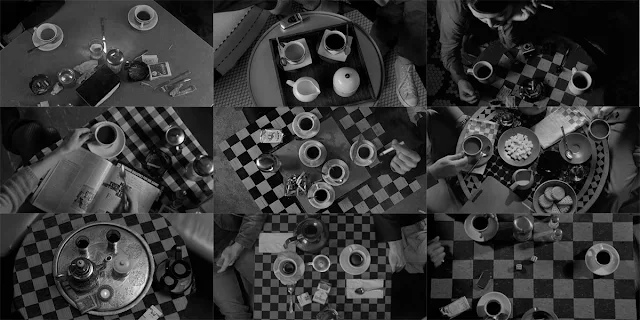 |
| Alex Descas and Isaach de Bankolé in No Fear, No Die |
Cast: Isaach de Bankolé, Alex Descas, Jean-Claude Brialy, Solveig Dommartin, Christopher Buchholz, Christa Lang, Gilbert Felmar, Daniel Bellus, François Oloa Biloa, Pipo Saguera, Alain Banicles. Screenplay: Claire Denis, Jean-Pol Fargeau. Cinematography: Pascal Marti. Production design: Jean-Jacques Caziot. Film editing: Dominique Auvray. Music: Abdullah Ibrahim.
Claire Denis's No Fear, No Die is a story about exiles trying to make it in the land that colonized their homelands: Dah (Isaach de Bankolé) is from Benin and Jocelyn (Alex Descas) is from the West Indies. They have come to France to make a fortune in cockfighting. Dah is the businessman and Jocelyn the trainer. Jocelyn provides the contact, Pierre (Jean-Claude Brialy), whom he knew when he was a boy. Eventually, tensions arise between Jocelyn and Pierre, especially after Pierre notices that Jocelyn finds his wife, Toni (Solveig Dommartin), attractive and even names one of the fighting cocks after her. Pierre suggests to Jocelyn that he used to have sex with the man's mother. The explosive human situation is heightened by the sequences depicting cockfights. Denis directs with her usual no-nonsense approach to the brutal actuality that lies hidden beneath the veneer of civilization.







